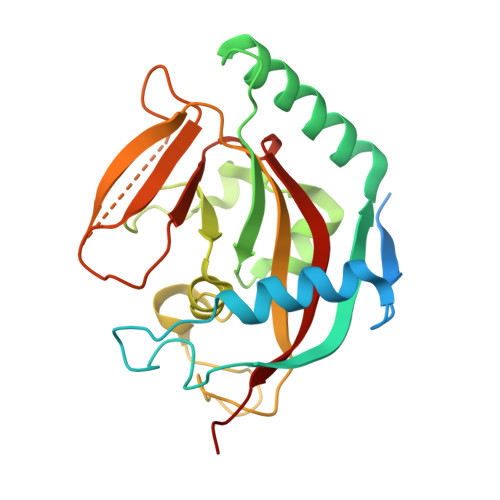Structural basis of selective inhibition of human tankyrases.
Narwal, M., Venkannagari, H., Lehtio, L.(2012) J Med Chem 55: 1360-1367
- PubMed: 22233320
- DOI: https://doi.org/10.1021/jm201510p
- Primary Citation of Related Structures:
3U9H, 3U9Y, 3UA9 - PubMed Abstract:
Tankyrases are poly(ADP-ribose) polymerases that have many cellular functions. They play pharmaceutically important roles, at least in telomere homeostasis and Wnt signaling, by covalently ADP-ribosylating target proteins and consequently regulating their functions. These features make tankyrases potential targets for treatment of cancer. We report here crystal structures of human tankyrase 2 catalytic fragment in complex with a byproduct, nicotinamide, and with selective inhibitors of tankyrases (IWR-1) and PARPs 1 and 2 (olaparib). Binding of these inhibitors to tankyrase 2 induces specific conformational changes. The crystal structures explain the selectivity of the inhibitors, reveal the flexibility of a substrate binding loop, and explain existing structure-activity relationship data. The first crystal structure of a PARP enzyme in complex with a potent inhibitor, IWR-1, that does not bind to the widely utilized nicotinamide-binding site makes the structure valuable for development of PARP inhibitors in general.
Organizational Affiliation:
Pharmaceutical Sciences, Department of Biosciences, Abo Akademi University, FI-20520 Turku, Finland.


















